Innovative Design Ideas for Creating a Stylish Commercial Patio Furniture Space
The demand for innovative design ideas in the realm of commercial patio furniture has seen a significant surge in recent years, propelled by the booming outdoor hospitality market. According to a recent report by IBISWorld, the outdoor furniture industry is projected to grow at an annual rate of 5.2%, reaching an estimated value of $6.5 billion by 2024. This growth is largely driven by restaurants, cafes, and hotels that are increasingly looking to enhance their outdoor spaces to attract customers and create a stylish ambiance. Cleverly designed commercial patio furniture can not only improve customer experience but also optimize space utilization, leading to higher profitability. As businesses recognize the importance of aesthetic appeal combined with functional durability, embracing innovative design ideas becomes essential in distinguishing their offerings from competitors in a crowded marketplace.
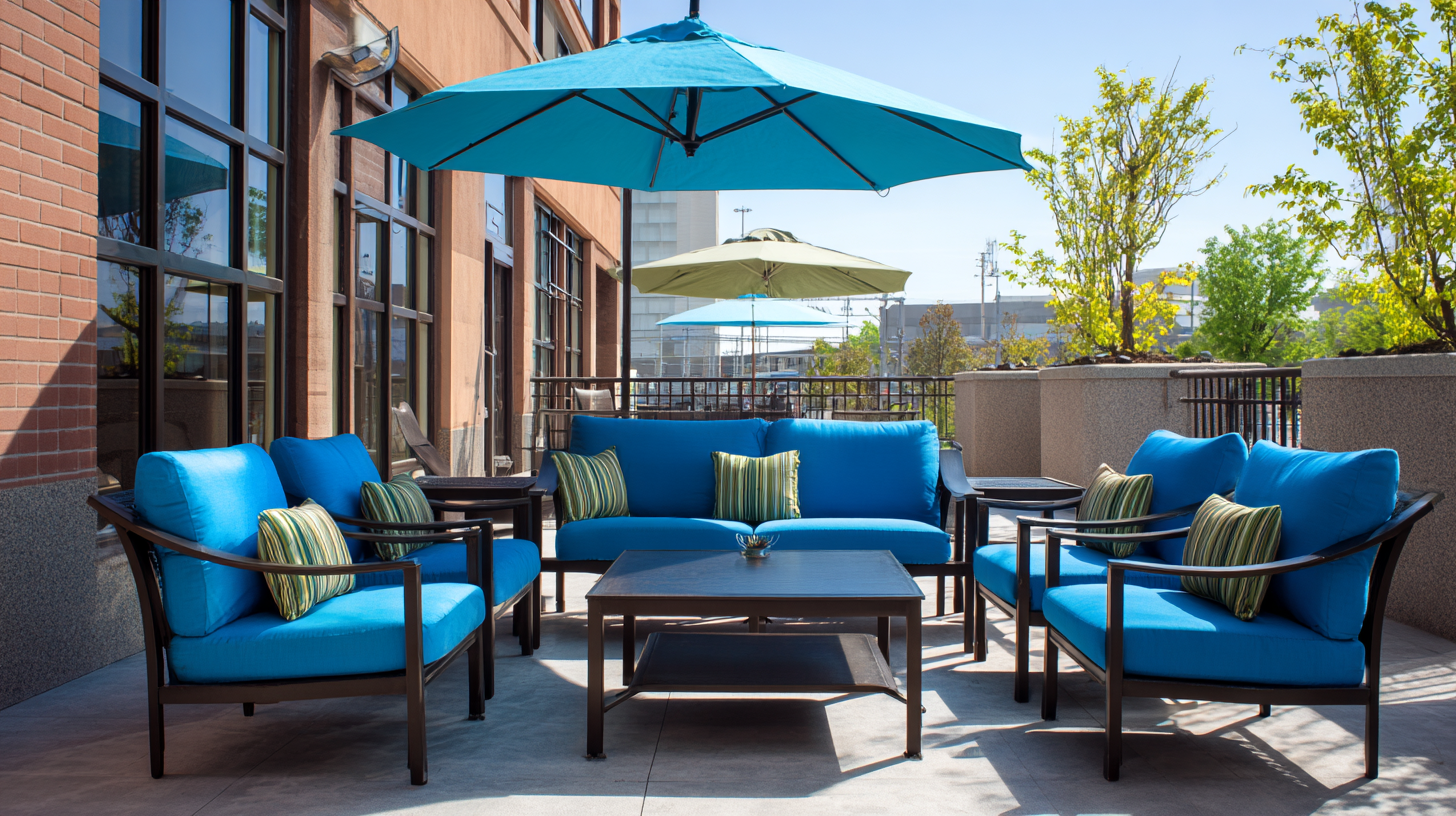
Trends in Outdoor Commercial Furniture: Key Statistics on Consumer Preferences
The outdoor furniture market is experiencing significant growth, driven by changing consumer preferences and an increasing desire for stylish yet functional spaces. According to recent analyses, the demand for outdoor chairs and other furniture products is on the rise, with materials such as plastic, wood, and metal being favored by consumers for their durability and aesthetic appeal. The shift toward outdoor living is reshaping the landscape of commercial patios, where the importance of design and functionality cannot be overstated.
As urban living spaces become limited, the multifunctional furniture segment is predicted to soar, projected to reach $17.69 billion by 2033. This trend highlights the need for versatile outdoor solutions that can cater to various functions without compromising style. With the popularity of outdoor kitchens and patios growing, consumers are increasingly interested in furniture that not only enhances their outdoor experience but also aligns with modern design aesthetics. The focus on space-saving and portable options emphasizes a new era in outdoor commercial furniture, making it essential for businesses to adapt to these evolving trends to meet customer expectations.
Sustainable Materials: The Impact of Eco-Friendly Options in Patio Design
In recent years, the demand for sustainable materials in commercial patio design has significantly increased, driven by a growing awareness of environmental issues. According to a 2022 report by the Global Sustainable Materials Organization, the eco-friendly materials sector is projected to reach $150 billion by 2025, highlighting the shift towards more sustainable practices in the design industry. Utilizing materials such as reclaimed wood, recycled metal, and eco-conscious plastics not only reduces the carbon footprint of outdoor furniture but also appeals to eco-conscious consumers looking for stylish yet responsible choices.
Moreover, the integration of sustainable materials can enhance the aesthetic appeal of patio spaces. For instance, furniture made from recycled aluminum is not only lightweight and durable but also comes in an array of colors and finishes, allowing for customization that meets various branding needs. A study from the Journal of Sustainable Design indicates that incorporating greenery and natural materials can improve the overall ambiance of commercial settings, resulting in increased customer satisfaction by up to 30%. As businesses continue to embrace eco-friendly options, the design of commercial patio spaces can evolve into fashionable environments that showcase brand commitment to sustainability.
Innovative Design Ideas for Creating a Stylish Commercial Patio Furniture Space - Sustainable Materials: The Impact of Eco-Friendly Options in Patio Design
| Material | Sustainability Rating | Durability (Years) | Style Options | Cost (per unit) |
|---|---|---|---|---|
| Recycled Aluminum | High | 20+ | Modern, Sleek | $150 |
| Bamboo | High | 10-15 | Natural, Rustic | $120 |
| Recycled Plastic | Medium | 15-20 | Colorful, Versatile | $80 |
| FSC-Certified Wood | High | 15-25 | Traditional, Elegant | $200 |
| Cork | Medium | 5-10 | Unique, Contemporary | $100 |
Color Psychology: How Color Choices Affect Customer Experience in Outdoor Spaces
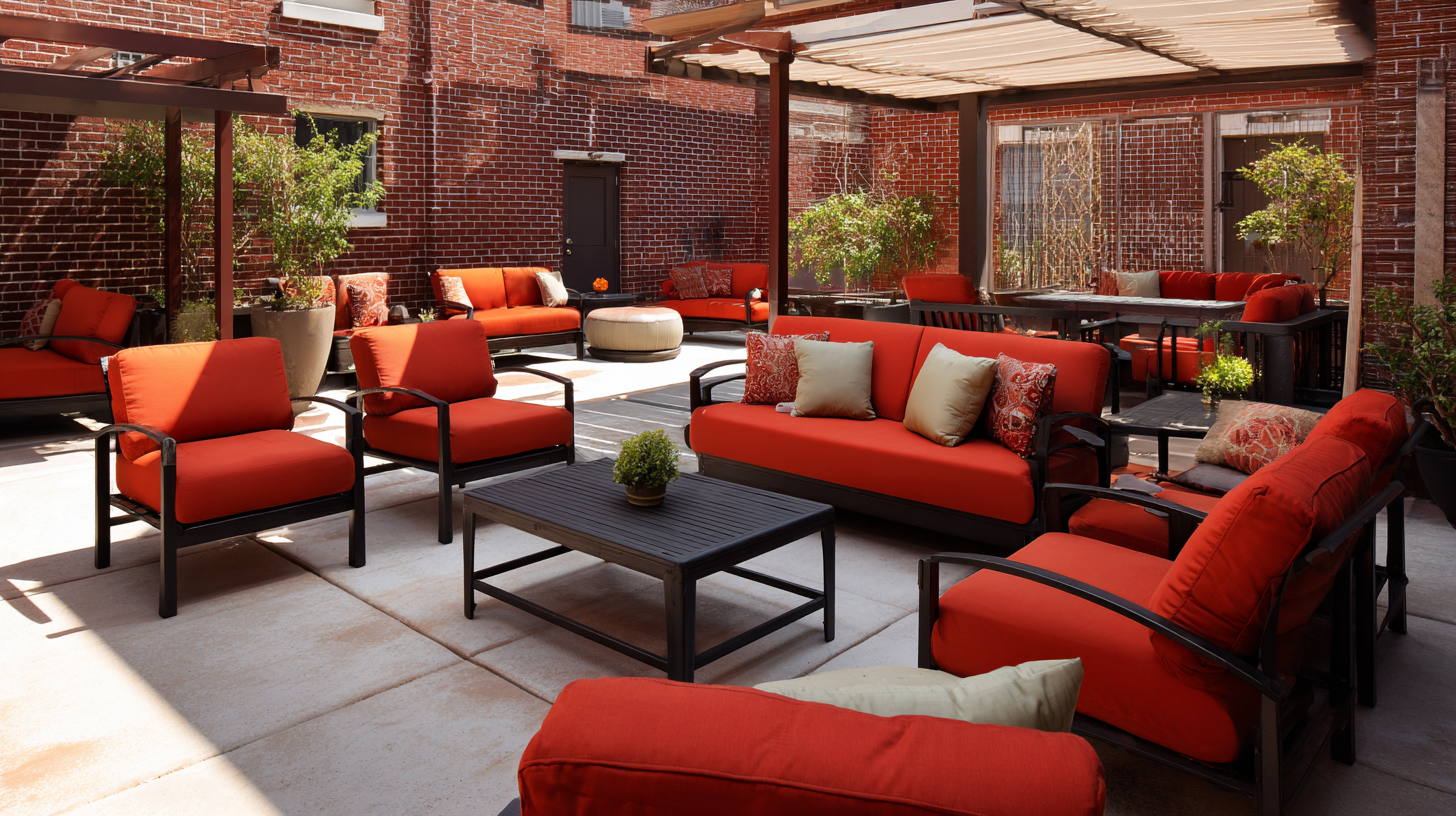 The ambiance of an outdoor space is significantly shaped by color choices, making color psychology a crucial consideration for commercial patio furniture. Warm colors like red and orange can evoke feelings of excitement and warmth, attracting customers to linger longer. These hues not only enhance visibility but also stimulate appetite, making them ideal for cafes and restaurants. In contrast, cooler colors such as blue and green create a calming atmosphere, encouraging relaxation and social interaction. These tones are particularly effective in spaces meant for unwinding, like bars and lounges, where customers seek a serene escape.
The ambiance of an outdoor space is significantly shaped by color choices, making color psychology a crucial consideration for commercial patio furniture. Warm colors like red and orange can evoke feelings of excitement and warmth, attracting customers to linger longer. These hues not only enhance visibility but also stimulate appetite, making them ideal for cafes and restaurants. In contrast, cooler colors such as blue and green create a calming atmosphere, encouraging relaxation and social interaction. These tones are particularly effective in spaces meant for unwinding, like bars and lounges, where customers seek a serene escape.
Additionally, the interplay of color and natural elements can enhance the customer experience. Incorporating earthy tones through furniture and decor can create a cohesive aesthetic that aligns with outdoor environments. This connection with nature not only promotes tranquility but can also foster a sense of community. For instance, using deep greens and browns alongside vibrant floral accents can create an inviting patio that captivates patrons. Ultimately, understanding how color impacts mood and behavior is essential for designing a stylish commercial patio that resonates with customers while driving foot traffic.
Modular Designs: Flexible Furniture Solutions for Maximizing Patio Utility
When designing a commercial patio space, modular furniture offers an innovative solution that maximizes both utility and style. The core advantage of modular designs lies in their flexibility; they can be easily rearranged to accommodate different group sizes, events, and configurations. This adaptability allows businesses, from cafes to event spaces, to transform their outdoor areas to suit various needs, whether it’s creating intimate seating for smaller gatherings or larger setups for events.

Furthermore, combining modular elements with aesthetic appeal enhances the overall atmosphere of the patio. With various materials and finishes available, businesses can select pieces that reflect their brand identity while remaining functional. For example, lightweight materials allow for effortless reconfiguration, while weather-resistant fabrics ensure durability in outdoor settings. By prioritizing versatile furniture solutions, commercial spaces can foster an inviting environment that encourages customer engagement and satisfaction, ultimately elevating the outdoor experience.
Incorporating Technology: The Role of Smart Features in Modern Patio Furniture Design
Incorporating technology in modern patio furniture design has transformed outdoor spaces into extensions of indoor comforts. Smart features are not merely an add-on; they enhance functionality and user experience. For instance, integrated solar-powered charging stations allow guests to power their devices without compromising the aesthetic of the patio. Additionally, sensors can adjust lighting based on the time of day or occupancy, creating a welcoming ambiance while conserving energy.
Another innovative element is the integration of weather-resistant technology, which is particularly vital for maintaining the longevity of outdoor furniture. Smart textiles that resist fading, moisture, and mildew can ensure that furniture remains stylish and durable despite the elements. Furthermore, some patio pieces come equipped with built-in heating elements or cooling fans that adjust according to weather conditions, making outdoor dining and lounging comfortable year-round. These advancements not only elevate the design but also provide a seamless blend of utility and elegance, making patios ideal for both relaxation and social interaction.
Innovative Design Ideas for Stylish Commercial Patio Furniture
Related Posts
-

The Ultimate Checklist for Choosing the Best Commercial Patio Furniture for Your Business Success
-

The Ultimate Guide to Sourcing High Quality Commercial Patio Furniture Globally
-
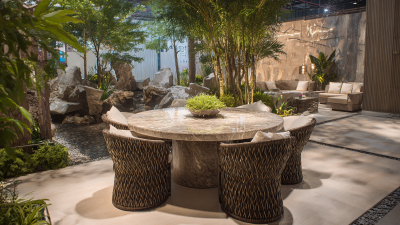
Innovative Patio Table Designs and Insights from the 2025 China Import and Export Fair
-
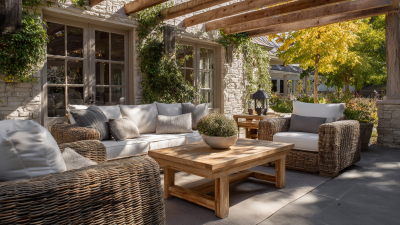
The Ultimate Guide to Choosing the Best Outdoor Seating for Your Space
-
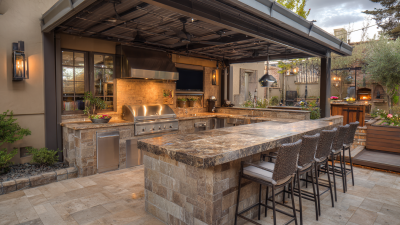
Ultimate Guide to Designing Your Dream Outdoor Kitchen: Tips and Inspirations
-

10 Surprising Facts About Outdoor Furniture Market Growth in 2023
INFORMATION CENTER
RESOURCES & MORE
INSPIRATION FOR YOU
© Copyright 1981 - 2025 | California Patio™ All Rights Reserved
© Copyright 1981 - 2025 | California Patio™ All Rights Reserved


